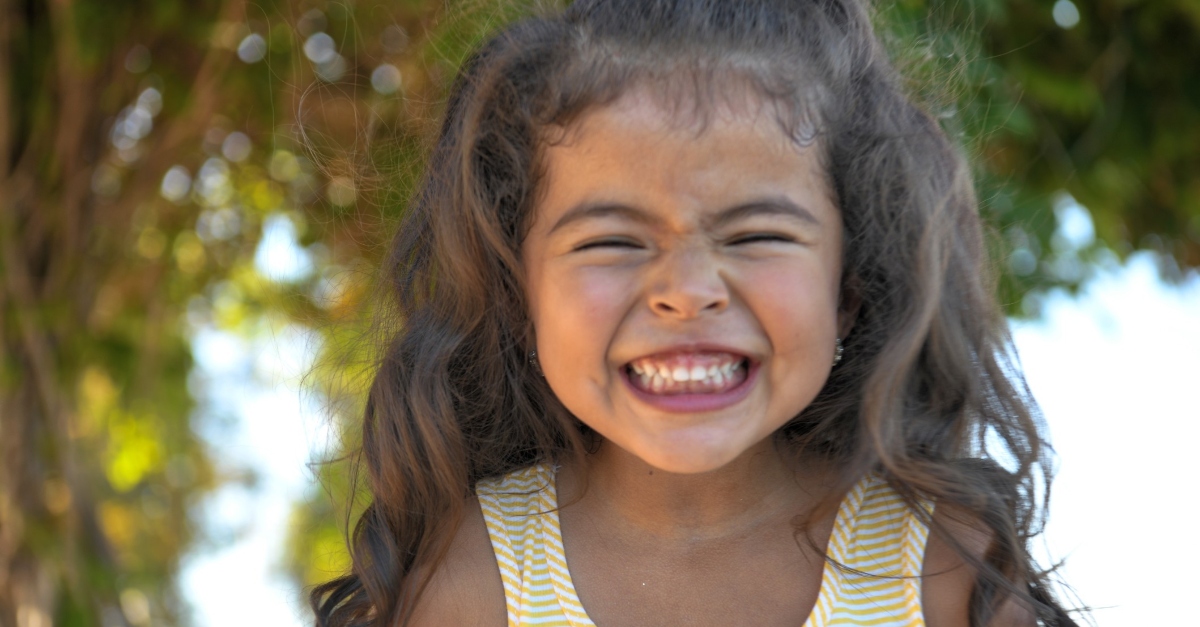
Right now, a lot of kids are still at home. Whether they're homeschooling or enrolled in distance learning through the school they usually attend, things are definitely looking pretty different on a lot of fronts. And while there have been plenty of discussions about if and when kids can safely return to school, there haven't been quite as many conversations about how parents can keep their children engaged with nature and the outside world during this extended time at home. Luckily, Sara, an outdoor education expert, recently spoke to LittleThings about how parents can do exactly that.
Sara has a decades-long love for the great outdoors and the professional expertise to boot. She has worked in outdoor education for the last 21 years, including stints at YMCA camps in Michigan and New Jersey, as an assistant director at an educational farm in North Carolina, and most recently as a forest school teacher in Tennessee.
Sara's got a lot of advice for parents who are interested in nurturing or maintaining their child's love of being outside — whether you live in an urban environment, out in the country, or somewhere in between, she firmly believes it's possible to help your children forge a connection with the physical world around them.
Right now, it’s easy to forget that kids still need to run around outside and play. Or if you haven’t forgotten, due to restrictions in your city and country, it might be next to impossible to let your kids do so. So many of us are doing our best just to keep our heads above the water, and while we’re struggling to figure out how to do our jobs, educate our kids, and still somehow eat meals throughout the day, getting our kids to connect with their environment might not be high on our lists.
The benefits to kids being outside are innumerable, and study after study indicates that kids thrive when they get unfettered time outdoors.
As a mom, Sara knows how important it is to make sure her own children are outside:
"One of the factors that is most important to me is giving kids the opportunity to develop kinesthetic awareness (the ability to navigate spaces and awareness of how we move) and practice proprioception (the sense of self-movement and body position). These things are harder to come by when we are always indoors walking on smooth, flat floors, and spending a lot of time sitting."
Being outside also often acts as both a freeing and a calming agent for kids.
"Getting outdoors we are able to improve mental health by taking in more vitamin D and releasing endorphins when we exercise — even just a little exercise can go a long way. Minor risk-taking that occurs outdoors is also excellent for building a child's decision-making skills. Nature almost always calms the nerves and lessens the chance of arguments between children."
As a mom myself, I have frequently worried that my kid isn't getting "enough" hours outside. Right now, it's extra tough because a lot of our usual stomping grounds are closed, or I'm not sure they're entirely safe in terms of the health crisis. I asked Sara if it's true that any amount of time outside helps, and, much to my immense happiness, she said it definitely does.
"I think that every little bit helps. A lot of times starting small can be good, especially if there is reluctance. Chances are, something interesting will pique their curiosity while they are out there, and they will want to go back outside to see if they can spot that colorful flower, interesting rock, frog, or hawk again next time.
"Depending on your schedule and climate, you may be able to spend more or less time outdoors. I encourage my children to get outside for at least 10 to 15 minutes a few times a day (and there are some days that we spend several hours outdoors)."
If you want to immerse your children in nature but aren't sure where to start, don't worry: You're definitely not alone! Before I had a kid, I was definitely more of an indoorsy type of person. I mean, I still am — but now I'm infinitely more comfortable hiking, going primitive camping, kayaking, the works. It's pretty surprising, actually, but I've found that you can read a book pretty much anywhere (even though I'll always prefer my bed or a comfy chair).
In fact, if you also share a little apprehension about diving into the great outdoors, Sara says being honest about your own hesitation will do wonders:
"Parents can set a great example by talking with their kids about any unease they may have but explaining they would still like to be outside more and are willing to give it a try. Again, starting small is key. Sit on the porch, take a short walk, find friends or neighbors that can take you on a favorite hike or show you the best spots to throw rocks in a creek. Parents can familiarize themselves with any dangerous plants or animals in the area and educate their children about them to set their minds at ease."
You can also help your kids connect with nature while you're still inside. If you have a place in your home, Sara suggests setting up a "sit spot."
She explains, "This will be a place they return to often to sit and observe the change in the environment as the seasons change."
Nature journaling can also be done from home, both before and after you actually go outside together.
"Some kids will enjoy having a journal to jot down observations or make a sketch. Others may wish to take pictures of the wonders they discover. Nature scavenger hunts can be a great way to start exploring (many free printables can be found online). The best way is just to get out there and see what they see. Curiosity will build and answers to questions can be easily looked up online. There are many good apps for identifying plants, bird calls, animal tracks and more."
Of course, since we all live in different places, everyone has different access to nature. Luckily, Sara believes that you don't have to live next door to a waterfall to have an enriching experience:
"I think that any time outside is better than no time outside. One does not need to have the perfect wood or flowery field to experience the benefits of being outdoors. Finding a nearby tree or patch of grass, children can still observe the changes in that area. Sitting on a porch step or balcony figuring out where the sun rises and sets and where the moon will first be visible can be a start for those without access to more widespread nature. See which birds or insects are found nearby. Nature is quite resilient and will find its way into almost every neighborhood."







